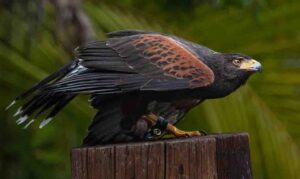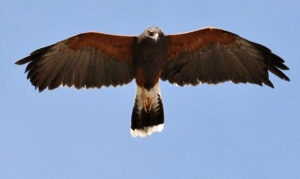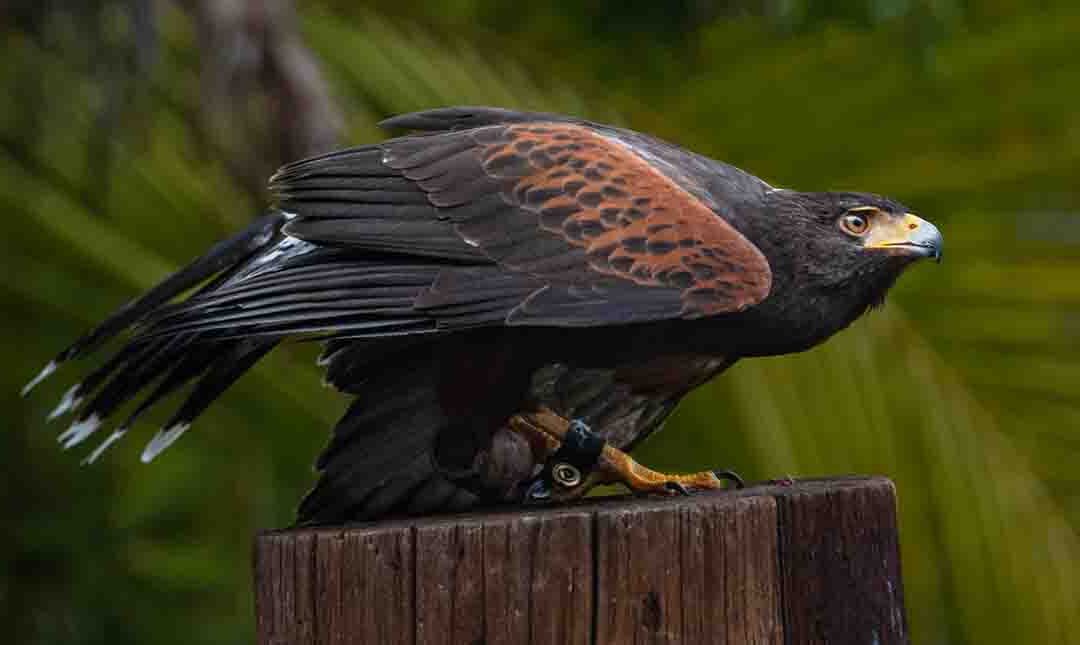About
These unusual raptors are sometimes called “wolves in the sky” because they are social birds of prey that hunt in groups of up to seven birds led by a mature female. The group may include offspring from the past three years as well as unrelated Harris’s hawks. This cooperative hunting technique may be unique to Harris’s hawks living in desert habitats where prey is hard to find. Group members separate into scouting parties that signal other pack members once prey has been spotted. Working together, the hawks then flush out, chase, and kill the prey. Researchers believe that hunting in groups makes it possible for these raptors to take down larger prey. The kill is shared according to social status. Prey is sometimes stored in trees to be eaten later. Territories are occupied and defended all year. Harris’s hawks living in the savannas of South America behave more like typical raptors and hunt alone.
Harris’s hawks play an important role in the ecosystem by controlling populations of birds, rodents, and lizards. In the West, they are the most popular hawks in falconry, easy to train and among the most social raptors.


Habitat
In the southwestern U.S. and Mexico, Harris’s hawks live in arid climates among mesquite, saguaro, and organ pipe cactus. In Central America and northern South America, they live in savanna and wetland habitats.
Diet
These carnivores subsist on rabbits, hares, rodents, small mammals, reptiles, and birds as well as carrion.
Physical Characteristics
Body length is 17 to 24 inches, and females are about 35 percent larger than males. Males weigh about 1.5 pounds; females more than two pounds. Wingspan is 45 inches, and lifespan is 14 to 25 years.
LOCATION WITHIN THE ZOO
You may see this bird take flight in the World of Birds Show.


